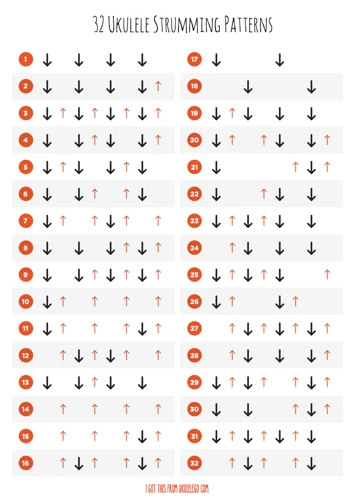As a guitarist, you probably already know that strumming is one of the most important aspects of playing the instrument. A good strumming pattern can make a simple chord progression sound interesting and dynamic, while a boring pattern can make even the most complex progression sound dull. In this blog post, we’ll explore some tips and tricks for creating unique strumming patterns that will help take your guitar playing to the next level.
Understanding the Basics
Before we dive into creating unique strumming patterns, it’s important to have a solid understanding of the basics. At its most basic level, strumming involves striking the strings of the guitar with a pick or your fingers in a rhythmic pattern. The most common strumming pattern is down, up, down, up, and so on. However, there are many variations and variations that you can use to create different sounds and rhythms.
Experiment with Different Rhythms
One of the easiest ways to create unique strumming patterns is to experiment with different rhythms. Instead of sticking to a strict down, up, down, up pattern, try mixing it up by adding in extra downstrokes or upstrokes. For example, you could try a pattern like down, down, up, down, up, or down, up, down, up, down, up. The key is to experiment and find what sounds good to you.
Add Accents to Your Strumming
Another way to create unique strumming patterns is to add accents to certain strokes. Accents are when you emphasize a particular stroke, making it louder and more pronounced than the others. This can help to create a more dynamic and interesting sound. To add accents to your strumming, try using a more forceful stroke on the accented beat, or using a different picking technique, such as a muted or dead stroke.
Incorporate Different Picking Techniques
In addition to using different rhythms and accents, you can also create unique strumming patterns by incorporating different picking techniques. For example, you could try using a fingerpicking pattern, where you pluck the strings with your fingers instead of strumming with a pick. Or, you could try using a percussive technique, where you strike the body of the guitar to create a rhythmic sound.
Play Around with Different Time Signatures
Another way to create unique strumming patterns is to play around with different time signatures. A time signature is a notational convention that indicates the number of beats in a measure and the note value of a beat. For example, the most common time signature is 4/4, which means there are four beats in a measure and each beat is a quarter note. However, there are many other time signatures you can use, such as 3/4, 6/8, or 5/4. Experimenting with different time signatures can help you create unique rhythms and patterns.
Listen to and Learn from Other Musicians
Another great way to create unique strumming patterns is to listen to and learn from other musicians. Pay attention to the strumming patterns used by your favorite guitarists and try to replicate them in your own playing. You can also find lessons and tutorials online that will teach you new strumming patterns and techniques.
Practice, Practice, Practice
As with any aspect of guitar playing, the key to creating unique strumming patterns is practice. The more you practice, the more comfortable you’ll become with different rhythms, accents, and picking techniques. And the more comfortable you are, the more likely you are to come up with your own unique strumming patterns.
Looking to create unique strumming patterns for your music? Explore our articles on essential strumming patterns for beginners, country strumming patterns, and classic country fingerpicking patterns for inspiration. Learn about unique sound bending techniques and the importance of changing strings to take your music to the next level!
Conclusion
Creating unique strumming patterns is a great way to add interest and dynamics to your guitar playing. By experimenting with different rhythms, accents, and picking techniques, you can create a wide variety of unique sounds and patterns. Additionally, listening to and learning from other musicians, and practicing regularly, will help you to develop your own unique strumming style. So, grab your guitar, start experimenting, and have fun!



